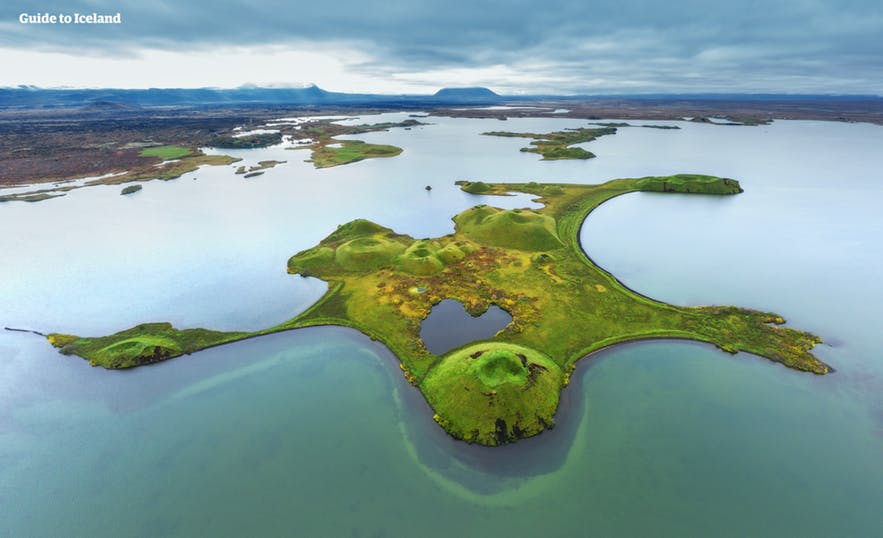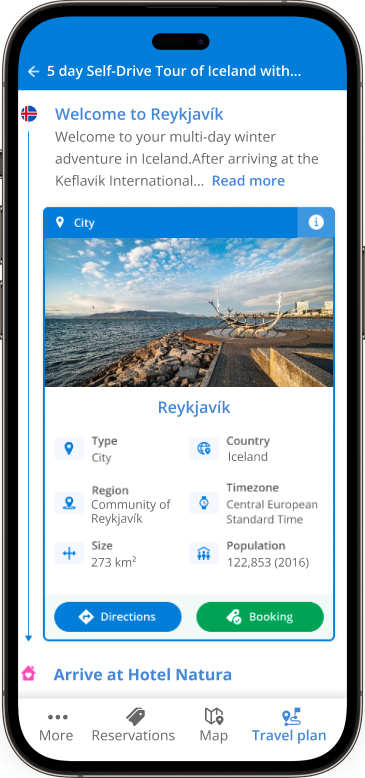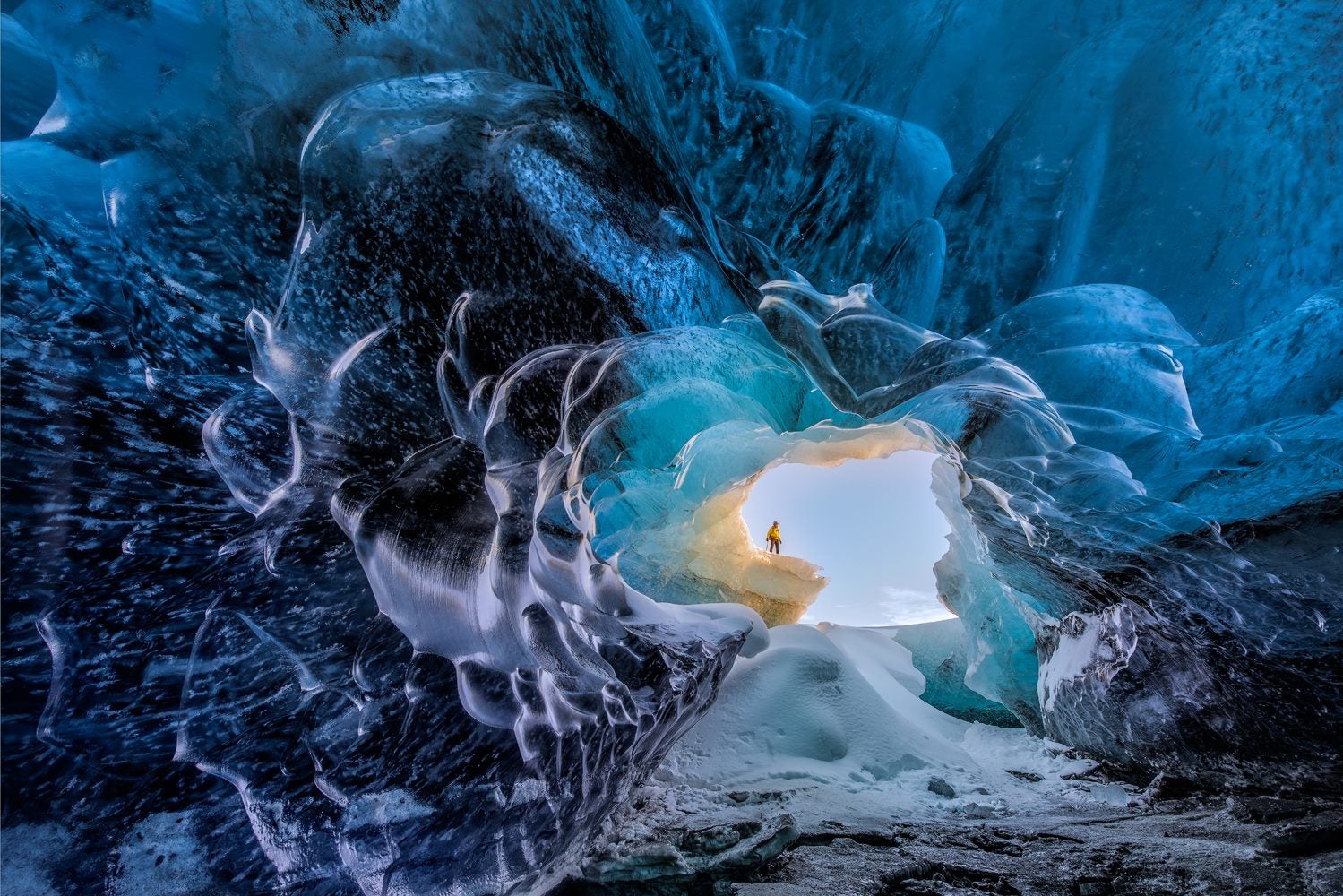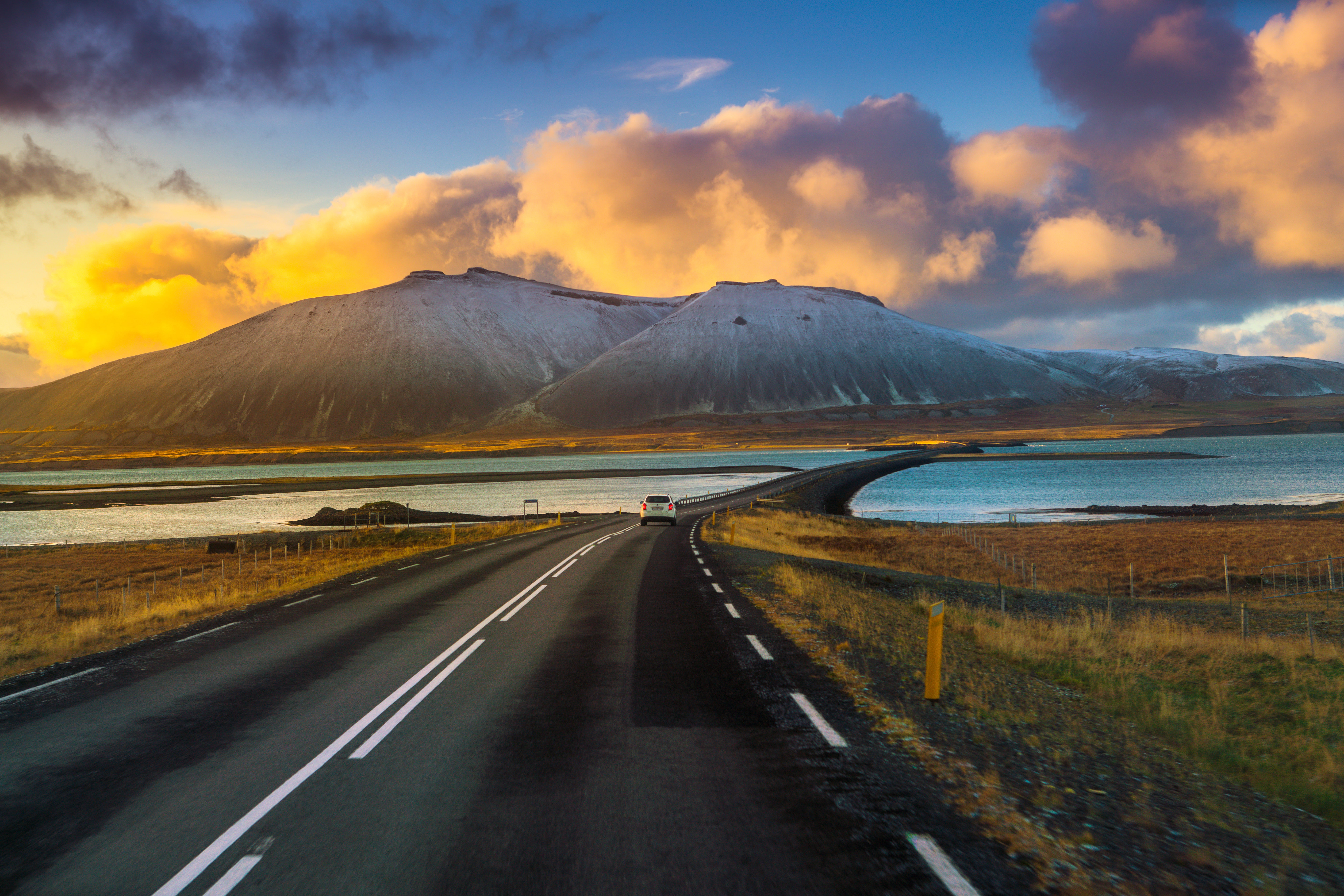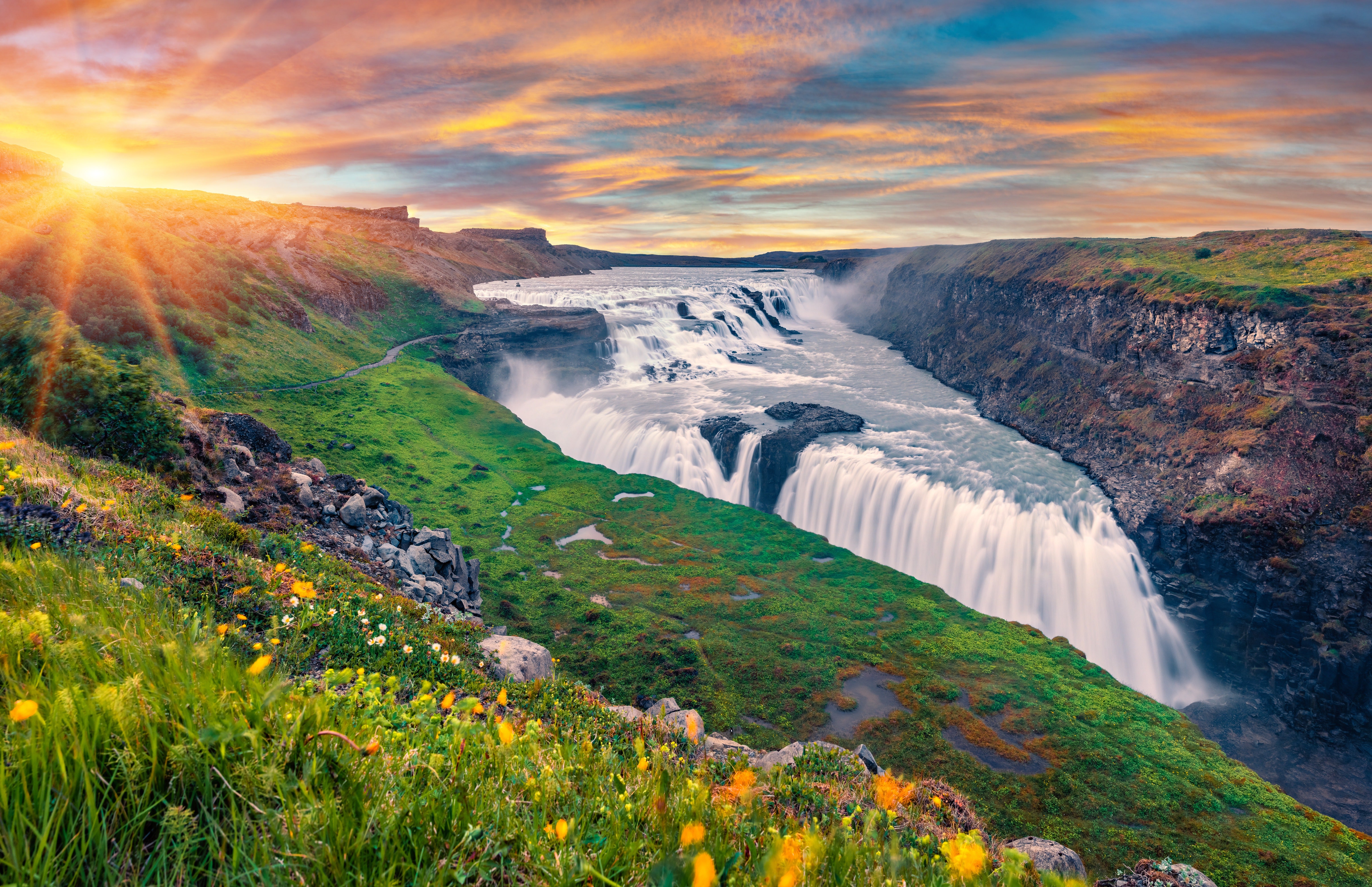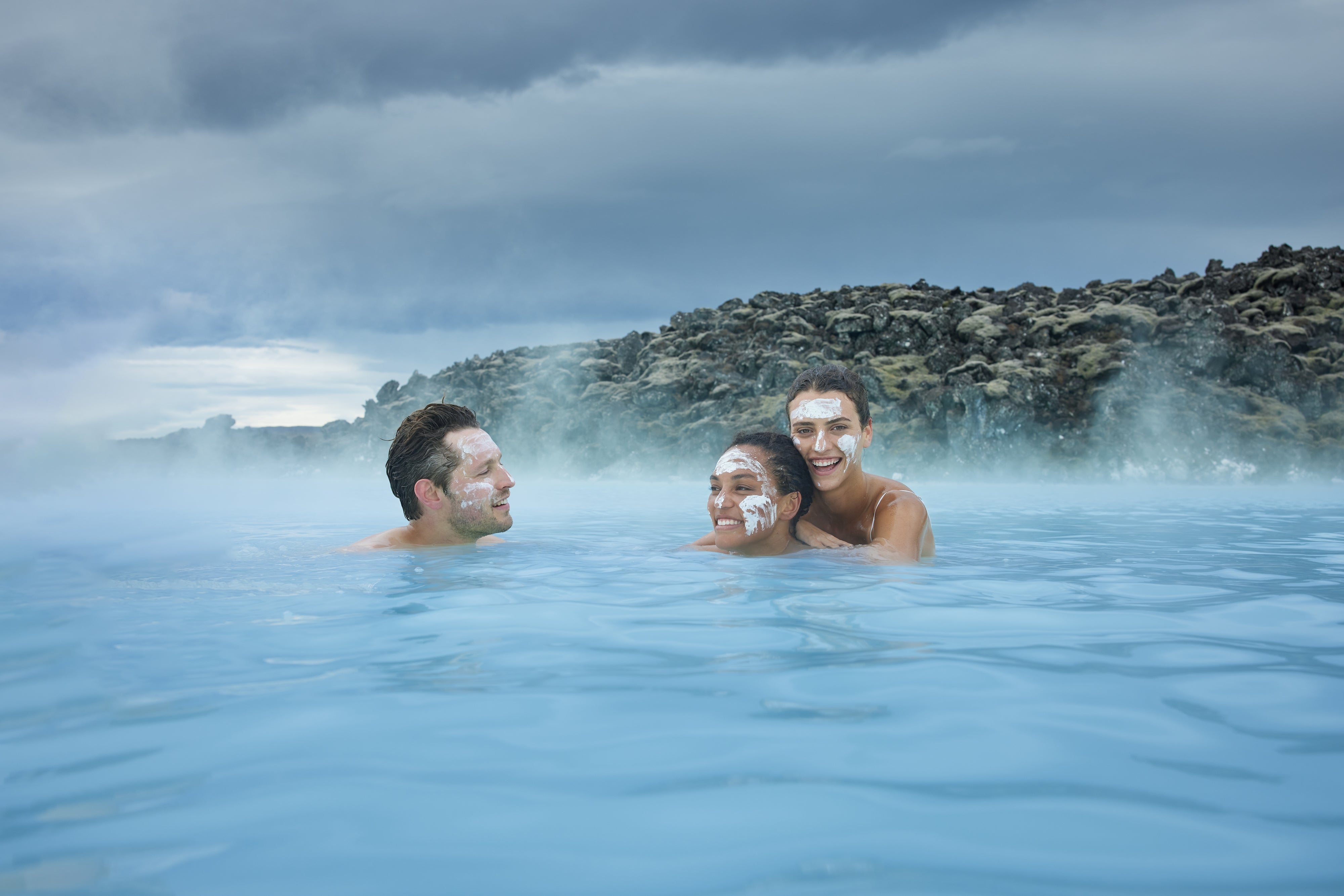
Manage your finances with a solid understanding of Iceland's currency and its cost structure. This guide provides a roadmap for navigating one of the world's most expensive destinations. The country's official money is the Icelandic krona (ISK), but you will quickly see that Iceland uses cards for almost everything.
Iceland is known for its high prices. However, you can spend much less by finding tour deals and discounts, using money-saving tips, and looking for accommodations with the lowest price guaranteed. Ultimately, knowing how your choices will impact your overall Iceland trip budget is the key to saving money.
In this article, we detail the denominations of the krona's banknotes and coins and offer practical advice on using credit cards and digital phone payments. We also show you essential apps for toll payments and parking, especially if you’re planning budget self-drive tours.
This information will help you worry less about money and focus on the beautiful nature of Iceland. You will be fully prepared for every payment and ready to enjoy your amazing trip.
Why You Can Trust Our Content
Guide to Iceland is the most trusted travel platform in Iceland, helping millions of visitors each year. All our content is written and reviewed by local experts who are deeply familiar with Iceland. You can count on us for accurate, up-to-date, and trustworthy travel advice.
Key Takeaways
-
The official currency of Iceland is the Icelandic krona (ISK).
-
Banknotes are commonly found in denominations of 500, 1,000, 2,000, 5,000, and 10,000 krona, and coins are in 1, 5, 10, 50, and 100 krona.
-
Iceland is a largely cashless society, with credit cards and debit cards being accepted almost everywhere.
-
Cash is rarely necessary, though helpful for coin-operated public toilets or flea markets.
-
The Icelandic krona separated from the Danish krone after Iceland gained autonomy in 1918, and the currency was significantly revalued (100 old to 1 new) in 1981 due to hyperinflation.
-
Iceland is generally considered an expensive destination, but you can save money by traveling during the shoulder or winter seasons, cooking your own meals, and opting for hostels or camping.
-
Because the ISK is only traded internally, it is difficult to exchange outside of Iceland, so it is best to spend your cash before leaving or keep small amounts as a souvenir.
What Is the Currency in Iceland?
 The official unit of currency used across Iceland is the Icelandic krona. This is the only official form of payment used throughout the country. Do not plan to rely on foreign currency for your trip.
The official unit of currency used across Iceland is the Icelandic krona. This is the only official form of payment used throughout the country. Do not plan to rely on foreign currency for your trip.
Here are things you should know about the Icelandic krona:
-
Name (Singular): Krona (the word literally means "crown")
-
Name (Plural): Kronur
-
International Currency Code: ISK (the ISO 4217 code)
-
Local Symbol: kr or kr.
It is a common question whether Iceland uses the euro (€). The answer is no. Despite being a European country, Iceland is not a member of the European Union and maintains its own independent currency.
Iceland Krona Currency Converter
A currency converter is the most direct way for you to manage your budget and check the rates of Icelandic krona before and during your trip. To quickly convert ISK to USD, the British pound to Icelandic krona, or check the EUR to ISK exchange rate, you can use the conversion calculator above.
Icelandic Krona Banknotes and Coins
 While you will find Iceland is a heavily cashless society, the Icelandic krona denominations come in both notes and coins. Each design is a small piece of Icelandic history, art, and nature for you to observe.
While you will find Iceland is a heavily cashless society, the Icelandic krona denominations come in both notes and coins. Each design is a small piece of Icelandic history, art, and nature for you to observe.
Banknotes (Kronur) in Iceland
 Icelandic banknotes are printed in five denominations. You will find that these notes feature images of prominent, historically significant Icelandic people.
Icelandic banknotes are printed in five denominations. You will find that these notes feature images of prominent, historically significant Icelandic people.
| Denomination | Main Figure Featured | Contribution to Iceland |
|---|---|---|
| 10,000 kr | Jónas Hallgrímsson | A beloved poet and naturalist |
| 5,000 kr | Ragnheiður Jónsdóttir | An accomplished seamstress and educator |
| 2,000 kr | Jóhannes Kjarval | One of Iceland’s most loved painters |
| 1,000 kr | Brynjólfur Sveinsson | A Lutheran Bishop known for preserving Norse sagas |
| 500 kr | Jón Sigurðsson | The leader of Iceland’s independence movement |
The 2,000 krona banknote is valid, but it is used less frequently than the other krona banknotes. You may not receive or see them often during your trip.
Icelandic Coins
 The Icelandic coins are issued in five denominations. A central element of the design is a tribute to Iceland's strong connection to the ocean and its fishing economy. The reverse side of all coins features the four mythical guardian spirits of Iceland (the landwights).
The Icelandic coins are issued in five denominations. A central element of the design is a tribute to Iceland's strong connection to the ocean and its fishing economy. The reverse side of all coins features the four mythical guardian spirits of Iceland (the landwights).
| Denomination | Featured Design |
|---|---|
| 100 kr | Lumpfish |
| 50 kr | Shore crab |
| 10 kr | Capelin (a small fish) |
| 5 kr | Common dolphins |
| 1 kr | Atlantic cod |
While the krona was once divided into smaller subunits called aurar, all of those smaller aurar denominations were officially taken out of circulation by 2003. This was done because decades of inflation had reduced their purchasing power to the point where they were largely useless and costly to produce.
History of the Icelandic Krona
 Note: The Icelandic banknotes shown in this image are no longer in circulation. They represent older designs that are part of the krona’s historical evolution.
Note: The Icelandic banknotes shown in this image are no longer in circulation. They represent older designs that are part of the krona’s historical evolution.
The Icelandic krona (ISK) has a turbulent past, which is directly tied to the nation’s journey to independence. To understand the currency you will use on your trip, here are the most important historical milestones you should know:
-
Before 1918: When Iceland was under the rule of Denmark, people relied on Danish currency. Iceland started printing its own krona-denominated notes in 1885.
-
1918: After Iceland won its independence from Denmark, the Icelandic krona was officially established as the country’s own separate currency.
-
1922: The first official krona coins were put into circulation.
-
1981: Due to very high inflation, Iceland performed a major currency revaluation, replacing 100 old krona with one new krona, and formally changing the currency code to ISK.
-
2008: The financial crisis hit Iceland hard, causing the value of the krona to drop sharply. Because the krona became so cheap, tourism quickly boomed, eventually becoming the country's primary source of income.
-
After 2008: As the economy recovered, prices increased steadily over time, bringing Iceland back to its current status as an expensive destination.
Cost of Travel in Iceland
 If you are wondering how much a trip to Iceland costs, most travelers should expect to budget 19,100 ISK to 38,300 ISK (150 USD to 300 USD) per person per day on average, excluding the cost of flights to Iceland.
If you are wondering how much a trip to Iceland costs, most travelers should expect to budget 19,100 ISK to 38,300 ISK (150 USD to 300 USD) per person per day on average, excluding the cost of flights to Iceland.
Iceland has a reputation for being one of the most expensive countries to visit in Europe, but your choices entirely determine your Iceland trip budget. To help you with your budgeting, here is a clear breakdown of the average cost in Iceland per person daily for a mid-range trip:
| Category | Cost Estimate | Notes on Price Variation |
|---|---|---|
| Accommodation | 19,100 ISK – 31,900 ISK (150 USD – 250 USD) | Averages for mid-range hotels or guesthouses. You can find hostels starting at 5,100 ISK – 10,200 ISK (40 USD – 80 USD). |
| Food & Drink | 5,100 ISK – 8,900 ISK (40 USD – 70 USD) | This depends heavily on whether you cook or where you dine out. Restaurant meals are expensive. |
| Transportation | 6,400 ISK – 12,800 ISK (50 USD – 100 USD) | The average cost for a rental car varies by size and season. |
| Activities & Tours | 3,800 ISK – 12,800 ISK (30 USD – 100 USD) | Many sights are free, but major tours like glacier hikes often cost around 19,100 ISK (150 USD). |
Saving Money in Iceland
 Because Iceland is expensive, budgeting and knowing how to save money are crucial. By following these Iceland budget tips, you can secure cheap travel in Iceland and have an unforgettable adventure. If you focus on self-catering and budget accommodation, you can aim for a daily budget of roughly 12,000 ISK (94 USD).
Because Iceland is expensive, budgeting and knowing how to save money are crucial. By following these Iceland budget tips, you can secure cheap travel in Iceland and have an unforgettable adventure. If you focus on self-catering and budget accommodation, you can aim for a daily budget of roughly 12,000 ISK (94 USD).
Saving on Accommodation in Iceland
 These money-saving hacks Iceland travelers use focus heavily on timing and shared costs. Plan your timing by visiting during the low seasons (October to April) and booking your accommodation early to lock in cheaper rates, as prices can drop significantly outside of peak summer.
These money-saving hacks Iceland travelers use focus heavily on timing and shared costs. Plan your timing by visiting during the low seasons (October to April) and booking your accommodation early to lock in cheaper rates, as prices can drop significantly outside of peak summer.
Opting for budget stays like hostels, shared accommodation, or camping is the most cost-effective method. For example, a typical campground spot costs approximately 1,000 ISK to 2,600 ISK (8 USD to 20 USD) per person per night.
Saving on Food and Drink in Iceland
 Dining out is a major expense, so you should prioritize cooking and smart shopping. Cooking your own meals is the single biggest saving hack. Use accommodations with kitchens and stock up on groceries at budget-friendly supermarkets like Kronan. You should also avoid expensive convenience stores like 10-11.
Dining out is a major expense, so you should prioritize cooking and smart shopping. Cooking your own meals is the single biggest saving hack. Use accommodations with kitchens and stock up on groceries at budget-friendly supermarkets like Kronan. You should also avoid expensive convenience stores like 10-11.
For beverages, never buy bottled water, as Iceland’s water is perfectly safe and free to drink. Alcohol in Iceland is very expensive due to high taxes, so you should purchase it at the Duty Free shop upon arrival at Keflavik Airport or stick to Happy Hour deals.
Tax-Free Shopping in Iceland (VAT Refund)
 You can recover some of your spending by claiming a Value Added Tax (VAT) refund on goods you purchase. Eligibility requires you to be a non-resident of Iceland, and the total purchase price must be at least 12,000 ISK (94 USD) on a single receipt, including VAT. You can typically expect to receive a refund of up to 14% of the purchase price.
You can recover some of your spending by claiming a Value Added Tax (VAT) refund on goods you purchase. Eligibility requires you to be a non-resident of Iceland, and the total purchase price must be at least 12,000 ISK (94 USD) on a single receipt, including VAT. You can typically expect to receive a refund of up to 14% of the purchase price.
To complete the process, ask the retailer for a Tax Free Form. You must then present the goods, the completed form, and the original receipts to the tax refund service provider at Keflavik International Airport before checking in your luggage.
Do You Need Cash in Iceland?
 The short answer is: No, you do not need cash in Iceland. The country is recognized as one of the most cashless societies globally. Credit cards, debit cards, and digital wallets like Apple Pay and Google Pay are the preferred payment methods and are accepted nearly everywhere.
The short answer is: No, you do not need cash in Iceland. The country is recognized as one of the most cashless societies globally. Credit cards, debit cards, and digital wallets like Apple Pay and Google Pay are the preferred payment methods and are accepted nearly everywhere.
Cash can be used, but it is rarely expected. You will only need it for a few specific and remote situations, such as coin-operated public toilets or certain stalls at the Kolaportid Flea Market.
How Much Cash To Bring to Iceland
 You do not strictly need cash in Iceland, as the island operates almost completely cashless. However, you can keep a small amount of local currency for rare exceptions. It is wise to withdraw or exchange roughly 10,000 ISK (79 USD).
You do not strictly need cash in Iceland, as the island operates almost completely cashless. However, you can keep a small amount of local currency for rare exceptions. It is wise to withdraw or exchange roughly 10,000 ISK (79 USD).
Where To Exchange Currency in Iceland
 The best way to get Icelandic krona is to use the most convenient options, which include:
The best way to get Icelandic krona is to use the most convenient options, which include:
-
ATMs (hradbanki): You can find ATM locations across the island, especially at Keflavik Airport, in Reykjavik, and in most larger towns. ATMs usually offer the most competitive exchange rates, which makes them the generally preferred choice.
-
Banks: You can exchange all major currencies (US dollar, euro, British pound) at banks like Landsbankinn, Islandsbanki, and Arion Banki. Bank branches are typically open on weekdays from 9 AM to 4 PM.
-
Airport Desk: For quick exchange upon arrival, you can use the Prosegur Change desk located in the Arrivals Hall on the first floor of Keflavik Airport. The desk has extended hours, typically operating from 4:30 AM to 10 PM every day, for currency exchange and tax refunds.
Can You Use Foreign Currency in Iceland
 You should never rely on using foreign money, as businesses are under no obligation to accept anything other than the Icelandic krona.
You should never rely on using foreign money, as businesses are under no obligation to accept anything other than the Icelandic krona.
While some tourist-heavy locations, such as large souvenir shops or hotels, may accept the US dollar or euro, they are the exception. These merchants set their own exchange rate, which is almost always much less favorable than the rate you would get by paying with your card or withdrawing cash from an ATM.
Cashless Payment in Iceland
 The reason Iceland is a cashless society is due to its complete adoption of modern electronic payments, which makes it easy for you to travel using just your smartphone or card. Contactless payments are the norm for locals and tourists alike.
The reason Iceland is a cashless society is due to its complete adoption of modern electronic payments, which makes it easy for you to travel using just your smartphone or card. Contactless payments are the norm for locals and tourists alike.
What Credit Cards To Use in Iceland
 Your credit or debit card is essential for everything from booking guided tours to buying a coffee. The best card for your trip is a Visa or MasterCard with a chip and a 4-digit PIN. You will need that PIN for self-service machines, especially when paying for fuel at gas stations.
Your credit or debit card is essential for everything from booking guided tours to buying a coffee. The best card for your trip is a Visa or MasterCard with a chip and a 4-digit PIN. You will need that PIN for self-service machines, especially when paying for fuel at gas stations.
To avoid extra costs, check if your bank charges a foreign transaction fee, which is often around 2 percent to 3 percent. Consider applying for a travel credit card that waives this fee to ensure every purchase is cheaper. Remember that American Express is generally less accepted than Visa or Mastercard.
Accepted Digital Wallets in Iceland
 Icelanders are highly tech-savvy, which means digital wallets and contactless payments are fully integrated everywhere. You will find that Apple Pay and Google Pay work perfectly in local shops, taxis, restaurants, and even self-service gas pumps in some areas. Using your phone or smartwatch is often the fastest and most convenient way to pay.
Icelanders are highly tech-savvy, which means digital wallets and contactless payments are fully integrated everywhere. You will find that Apple Pay and Google Pay work perfectly in local shops, taxis, restaurants, and even self-service gas pumps in some areas. Using your phone or smartwatch is often the fastest and most convenient way to pay.
Contactless payments have a standard transaction limit. For a single tap transaction on a standard card, the limit is 7,500 ISK (59 USD). You can continue tapping after that, but you will occasionally be prompted to insert your physical card and enter your PIN to reset the limit.
Can You Use Prepaid Cards and Travel Cards in Iceland?
 To completely avoid foreign transaction fees and poor bank exchange rates, using a multi-currency prepaid card or a travel-focused debit card is the best money solution for your trip to Iceland. Popular options like Wise (formerly TransferWise) and Revolut function as a local debit card.
To completely avoid foreign transaction fees and poor bank exchange rates, using a multi-currency prepaid card or a travel-focused debit card is the best money solution for your trip to Iceland. Popular options like Wise (formerly TransferWise) and Revolut function as a local debit card.
These cards use the real, near-perfect exchange rate (often called the mid-market rate) for currency conversion, significantly undercutting the markups typically added by traditional banks. You can spend Icelandic krona (ISK) without paying the 2-3% foreign transaction fee your home bank usually charges.
Both cards can be instantly added to Apple Pay or Google Pay. Always choose to be charged in the local currency (ISK) when paying to ensure the conversion is done by your low-fee card provider, rather than the merchant's high-fee payment processor.
Payment Apps To Download in Iceland
 While your standard card or digital wallet handles general purchases, certain local apps are essential for managing transport and mandatory fees in Iceland. Downloading these payment apps will ensure a smoother trip and help you avoid unnecessary fines.
While your standard card or digital wallet handles general purchases, certain local apps are essential for managing transport and mandatory fees in Iceland. Downloading these payment apps will ensure a smoother trip and help you avoid unnecessary fines.
-
EasyPark / Parka (Parking): If you rent a car, having a reliable parking app is mandatory in both Reykjavik and at many major tourist attractions where parking fees are enforced digitally. Both EasyPark and Parka allow you to pay for street and lot parking, manage your time remotely, and avoid parking fines.
-
Klappid (Public Transport): This is the official companion app for Reykjavik's public bus system, Straeto. You use the Klappid app to buy single tickets or period passes and then scan the app's QR code when you board the bus.
-
Hopp (Taxi): This is Iceland's local, multi-service mobility app, which includes a taxi and ride-hailing feature. The Hopp app also offers electric scooter and car-sharing services.
-
Veggjald (Tunnel Toll): This is the official app for the Vadlaheidargong Tunnel, Iceland's only toll road, located in North Iceland. You must pay the toll online via the Veggjald website or app within 24 hours of passing through to avoid a fine and extra fees from your rental company.
Exchanging Leftover Icelandic Krona
 One of the goals of your trip should be to finish with as little local cash as possible. Since the Icelandic krona is not widely traded outside of Iceland, you will face unfavorable exchange rates or high fees when you try to exchange Icelandic krona back to your home currency once you leave the country.
One of the goals of your trip should be to finish with as little local cash as possible. Since the Icelandic krona is not widely traded outside of Iceland, you will face unfavorable exchange rates or high fees when you try to exchange Icelandic krona back to your home currency once you leave the country.
Here are some tips for dealing with leftover Icelandic krona:
-
Exchange at a bank in Reykjavik: Your best rate for converting banknotes will be at a major bank like Landsbankinn or Arion Banki. Note that banks are closed on weekends, which makes it difficult to exchange currency just before a weekend flight.
-
Exchange cash at the airport desk: If you miss the bank hours, the Prosegur Change desk at Keflavik Airport will exchange your banknotes. However, you should be prepared for this desk to offer a less favorable rate than a downtown bank.
-
Avoid coins: Most exchange desks, including those at the airport, will only accept banknotes, not coins. Plan to spend your loose coins entirely before arriving at the airport.
-
Spend it strategically: Use up your remaining krona on things like a final airport meal, a coffee, or a gift. You can spend cash at the airport Duty Free shops, but it is generally not recommended to buy expensive items here, as local stores often sell Icelandic souvenirs for less.
-
Donate or keep: For small amounts of cash, consider leaving them in an airport donation box or keeping them as a souvenir from your trip.
Frequently Asked Questions About Money in Iceland
This section provides quick, definitive answers to the most common questions travelers have about money and payment in Iceland.
Are credit cards widely accepted in Iceland?
Yes, credit cards are widely accepted everywhere. Iceland is functionally a cashless society, and cards (Visa and MasterCard, especially) are accepted in almost every location.
What's the best currency to bring to Iceland?
The best currency to bring to Iceland is the Icelandic krona (ISK). If you wish to bring foreign cash as a backup, bring US dollars or euros, but be aware that you must convert this currency into Icelandic krona upon arrival. However, since Iceland is almost entirely cashless, you will find that physical currency is rarely needed.
Is it better to exchange currency in Iceland or before arriving?
It is better to exchange currency in Iceland. You should avoid exchanging cash before your trip, as your home bank or local exchange office will likely offer a much worse rate. The best method is to withdraw Icelandic krona directly from an ATM.
Can I withdraw Icelandic krona from ATMs in Iceland?
Yes, you can easily withdraw Icelandic krona from ATMs. ATMs are readily available throughout Reykjavik and in most towns. Remember always to choose to be charged in ISK (local currency) to avoid high fees associated with Dynamic Currency Conversion (DCC).
Should I tip in Iceland?
No, tipping is not mandatory or expected in Iceland. The service charge is always included in the price of the bill. However, if you received genuinely exceptional service from a tour guide or a waiter, a small tip of 1,000 to 2,000 ISK (7.85 to 15.70 USD) is always appreciated.
Is it safe to carry cash in Iceland?
Yes, Iceland is one of the safest countries in the world. You do not need to worry about carrying cash. However, since virtually all transactions can be done by card, carrying large amounts of cash is unnecessary and inconvenient.
Master the Icelandic Krona
 You now have a roadmap for managing the Icelandic krona and navigating the country's cost structure. The most important takeaway is simply that the card is king. Iceland is a cashless society, and relying on your debit card, credit card, or digital wallet is the easiest method of payment available.
You now have a roadmap for managing the Icelandic krona and navigating the country's cost structure. The most important takeaway is simply that the card is king. Iceland is a cashless society, and relying on your debit card, credit card, or digital wallet is the easiest method of payment available.
Your financial success depends on using money-saving hacks and preparing apps for essential services. Finding affordable places to stay and researching the cheapest time to go to Iceland can also cut down on your expenses. By following these strategies, you ensure financial concerns will not distract you from the country's natural wonders.
What were your biggest surprises about money in Iceland? Did these tips save you Icelandic krona on your travels? Share your experiences and any additional money-saving hacks in the comments below!


